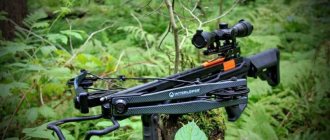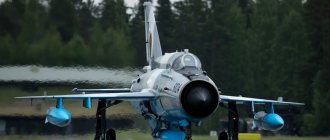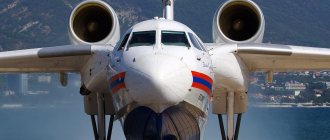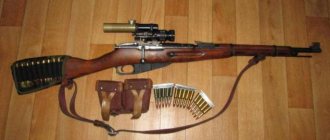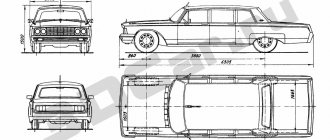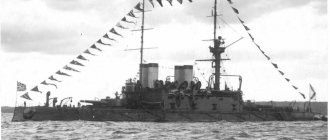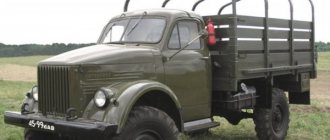This term has other meanings, see PTS.
| Serbian PTS-M, 2012. | |||||||||||||||||||||||||||||||
| PTS-M | |||||||||||||||||||||||||||||||
| Classification | floating conveyor | ||||||||||||||||||||||||||||||
| Combat weight, t | 17,8[1] | ||||||||||||||||||||||||||||||
| Crew, people | 2 | ||||||||||||||||||||||||||||||
| Troops, people | 70 | ||||||||||||||||||||||||||||||
| Story | |||||||||||||||||||||||||||||||
| Manufacturer | Lugansk Diesel Locomotive Plant | ||||||||||||||||||||||||||||||
| Years of development | 1965 | ||||||||||||||||||||||||||||||
| Basic operators | |||||||||||||||||||||||||||||||
| Dimensions | |||||||||||||||||||||||||||||||
| Case length, mm | 11 425 | ||||||||||||||||||||||||||||||
| Case width, mm | 3300 | ||||||||||||||||||||||||||||||
| Height, mm | 2650 | ||||||||||||||||||||||||||||||
| Track, mm | 2800 | ||||||||||||||||||||||||||||||
| Ground clearance, mm | 400 | ||||||||||||||||||||||||||||||
| Mobility | |||||||||||||||||||||||||||||||
| engine's type | V-54P
| ||||||||||||||||||||||||||||||
| Engine power, l. With. | 350 | ||||||||||||||||||||||||||||||
| Highway speed, km/h | 42 | ||||||||||||||||||||||||||||||
| Speed over rough terrain, km/h | 25 | ||||||||||||||||||||||||||||||
| Cruising range on the highway, km | 380 | ||||||||||||||||||||||||||||||
| Suspension type | individual torsion bar | ||||||||||||||||||||||||||||||
| Wall to be overcome, m | 0,65 | ||||||||||||||||||||||||||||||
| Ditch to be overcome, m | 2,0 | ||||||||||||||||||||||||||||||
| Fordability, m | swims at speeds up to 11 km/h | ||||||||||||||||||||||||||||||
PTS-M
— modernized medium floating conveyor.
The PTS-M tracked amphibious transporter is designed for amphibious crossing of artillery systems, wheeled and tracked tractors, armored personnel carriers, vehicles, personnel and various cargoes through water barriers.
Description of design
The conveyor consists of three main parts: the control compartment, the power compartment and the cargo compartment.
PTS-M differed from PTS in the following equipment: a cabin filter ventilation unit with air heating, a tubular frame with an awning, a set of sanitary equipment for 12 stretchers, a new radio station, a spotlight and a night vision device[1].
The loading platform area has been increased from 18.5 m² (7.1 x 2.6 m) to 20.54 m² (7.9 x 2.6 m). The carrying capacity has not changed compared to the PTS and is 10 tons on water and 5 tons on land.
Peculiarities
- Complete with cylinders of various capacities (from 4 to 9 l).
- Complete set of incoming components (panoramic mask, lung demand valve, valve) manufactured by PTS OJSC or imported manufacturers.
- Rescue device in two versions: panoramic mask or hood.
Options for PTS Profi
Poster in good quality by clicking the Download button.
Poster for the PTS Profi M classroom (Development: Valery Poroshenko)
Links
Airborne PVD-20 • DPP-40 Rear SP-19 • NARM • NZhM-56 • MLZh-M Means of motorization of crossings Towing and motor boats NKL-27 • SMK-75 • BMK-70 • BMK-90 • BMK-90M • BMK-130 • BMK-130M • BMK-130ML • BMK-150 • BMK-150M • BMK-150M1 • BMK-T • BMK- 225 • BMK-460 Motor links MZ-235 • MZ-330 Outboard motors SZ-10 • SZ-20 • MV-72 • MV-180 • SZM-45 Self-propelled landing craft Self-propelled ferries GSP • PMM • PMM-2 • PMM-2M • PDP Conveyors MAV • BAV • K-61 • PTS • PTS-M • PTS-2 • PTS-3 • PTS-4 Landing boats Iolshin's boat • Iolshin's bag • PMK • MIK-39 • A-3 • LG-12 • LMN • DSL • MSL • SDL • • MPK • DL-10 • NDL-10 • NDL-20 • NL-5 • NL-8 • NL-15 • NL-30 • SNL-8 Mechanized bridges Tank bridge layers MTU • MTU-20 • MT-55 • MTU-72 • MTU-90 Automobile bridge layers KMM • TMM • TMM-3 • TMM-3M • TMM-3M1 • TMM-6 Collapsible bridges Small spans MARM • TARM • MMP Medium and large spans SARM • BARM • TRM • MPB • GARM • RMM-4 • MVB Bridge construction means Combined arms KMS • KMS-E • USM • USM-2 • USM-3 Rear PSK-2-500 • SMP-86 • UZS • USB This is a draft article about military equipment. You can help the project by adding to it.
Black and white television
An experimental domestic model of the PTS-47 mobile television station was created at the All-Union Scientific Research Institute of Television Technology (NII-380 in Leningrad) in 1948 under the leadership of A.A. Sapozhnikova. The first experimental off-studio black-and-white broadcast using this station took place on May 1, 1949, from a military parade and demonstration that took place on Palace Square in Leningrad.
At the same time, the PTS was assembled at the Moscow Television Center on Shabolovka (MTC). Mobile TV equipment for it was purchased in the USA from RCA and placed in a large Škoda city bus specially purchased at the exhibition. All work on the PTS-MTC was carried out under the leadership of the chief engineer of the MTC S.V. Novakovsky. From this station on June 29, 1949, the first broadcast of a football match was carried out from the Dynamo stadium in Moscow. The historical PTS-ITC worked in Moscow until 1963 and was transferred to the Moscow Energy Institute (MPEI) for a television training studio.
During the operation of the experimental OB vans, the need arose to create standard samples of mobile television stations for television centers in large cities of the Soviet Union. PTS with three KT-5 cameras began to be developed in 1952 at the All-Russian Research Institute of Television and by 1954 the first sample was produced under the name PTS-52. All station equipment was placed in one ZIS-155 bus. The specifics of the station’s work implied not only the transportation of television equipment to the scene of events, but also the work of the video director and video technician inside the station directly during the broadcast of the program, so the interior of the bus was suitable for such work. In addition, the flat roof of the bus can be used as a platform for installing transmitting television cameras during public events on the street.
The first sample of the PTS-52 (single vehicle) was delivered to Kyiv, and with its help they carried out a demonstration from Khreshchatyk, dedicated to the celebration of the 300th anniversary of the reunification of Ukraine with Russia. But practice has shown that placing all the station equipment in one bus complicates the work due to cramped conditions. Therefore, the second and third samples of PTS-52 were manufactured in Leningrad in a two-machine version, which were delivered to Riga (in 1955) and Moscow (in 1956).
The first bus contained equipment for outside broadcasts and radio line equipment, the second - sound equipment, cable and other equipment.
During the operation of these PTS, it became clear that the placement of working equipment in two ZIS-155 buses complicates the deployment of the station; this required an increase in maintenance personnel. It also turned out to be inconvenient to accommodate the production and technical personnel on the same bus, and the standard buses needed modifications to accommodate the PTS. They had problems with heating and sound insulation of the interior from the street during operation.
In order to eliminate the identified shortcomings, instead of PTS-52, in 1958, the All-Russian Research Institute of Television (which by that time already had the secret name PO Box 431) developed the PTS-3 station, which retained all the technological equipment of the previous model, but was now located in one ZIL bus -158. Serial production of the station began in Leningrad in 1960. During the production process, it was constantly improved, and in 1964, a new radio line was installed at the station, and now it could be tuned to one of ten fixed frequencies, which ensured the possibility of simultaneous operation of six OB vans in one city. The station began to be equipped with more advanced KT-27Yu transmitting television cameras, which made it possible to significantly improve the quality of the transmitted image. The modernized station received the name PTS-3U and turned out to be the last television station developed on the basis of lamp technology.
In the same year, 1964, work began on the design of the PTS with the maximum use of semiconductor devices and with the maximum unification of its equipment with the second generation television equipment of the television center under construction in Ostankino. In 1972, the first two copies of such a station under the name PTS-4 were produced at the television factory in Siauliai. All station equipment was placed in a special LiAZ-5930 van, created a little earlier for the Lotos color station. In addition to the main vehicle, the station included an auxiliary bus LiAZ-677. It carried transmitters and radio antennas, additional power and camera cables, audio and communication cables, and remote units.
The PTS-4 television station had four camera channels, and its radio line provided line-of-sight communication at any time of the year and day up to 50 kilometers. For its time, the PTS-4 station was quite advanced, but its serial production had to be curtailed in 1977, since the era of black and white television was already ending.
Excerpt characterizing PTS-M
All the young ladies and even the ladies, with the exception of the oldest ones, stood up. Marya Dmitrievna stopped at the door and, from the height of her corpulent body, holding high her fifty-year-old head with gray curls, looked around at the guests and, as if rolling up, slowly straightened the wide sleeves of her dress. Marya Dmitrievna always spoke Russian. “Dear birthday girl with the children,” she said in her loud, thick voice, suppressing all other sounds. “What, you old sinner,” she turned to the count, who was kissing her hand, “tea, are you bored in Moscow?” Is there anywhere to run the dogs? What should we do, father, this is how these birds will grow up...” She pointed to the girls. - Whether you want it or not, you have to look for suitors. - Well, what, my Cossack? (Marya Dmitrievna called Natasha a Cossack) - she said, caressing Natasha with her hand, who approached her hand without fear and cheerfully. – I know that the potion is a girl, but I love her. She took out pear-shaped yakhon earrings from her huge reticule and, giving them to Natasha, who was beaming and blushing for her birthday, immediately turned away from her and turned to Pierre. - Eh, eh! kind! “Come here,” she said in a feignedly quiet and thin voice. - Come on, my dear... And she menacingly rolled up her sleeves even higher. Pierre approached, naively looking at her through his glasses. - Come, come, my dear! I was the only one who told your father the truth when he had a chance, but God commands it to you. She paused. Everyone was silent, waiting for what would happen, and feeling that there was only a preface. - Good, nothing to say! good boy!... The father is lying on his bed, and he is amusing himself, putting the policeman on a bear. It's a shame, father, it's a shame! It would be better to go to war. She turned away and offered her hand to the count, who could hardly restrain himself from laughing. - Well, come to the table, I have tea, is it time? - said Marya Dmitrievna. The count walked ahead with Marya Dmitrievna; then the countess, who was led by a hussar colonel, the right person with whom Nikolai was supposed to catch up with the regiment. Anna Mikhailovna - with Shinshin. Berg shook hands with Vera. A smiling Julie Karagina went with Nikolai to the table. Behind them came other couples, stretching across the entire hall, and behind them, one by one, were children, tutors and governesses. The waiters began to stir, the chairs rattled, music began to play in the choir, and the guests took their seats. The sounds of the count's home music were replaced by the sounds of knives and forks, the chatter of guests, and the quiet steps of waiters. At one end of the table the countess sat at the head. On the right is Marya Dmitrievna, on the left is Anna Mikhailovna and other guests. At the other end sat the count, on the left the hussar colonel, on the right Shinshin and other male guests. On one side of the long table are older young people: Vera next to Berg, Pierre next to Boris; on the other hand - children, tutors and governesses. From behind the crystal, bottles and vases of fruit, the Count looked at his wife and her tall cap with blue ribbons and diligently poured wine for his neighbors, not forgetting himself. The countess also, from behind the pineapples, not forgetting her duties as a housewife, cast significant glances at her husband, whose bald head and face, it seemed to her, were more sharply different from his gray hair in their redness. There was a steady babble on the ladies' end; in the men's room, voices were heard louder and louder, especially the hussar colonel, who ate and drank so much, blushing more and more, that the count was already setting him up as an example to the other guests. Berg, with a gentle smile, spoke to Vera that love is not an earthly, but a heavenly feeling. Boris named his new friend Pierre the guests at the table and exchanged glances with Natasha, who was sitting opposite him. Pierre spoke little, looked at new faces and ate a lot. Starting from two soups, from which he chose a la tortue, [turtle,] and kulebyaki and to hazel grouse, he did not miss a single dish and not a single wine, which the butler mysteriously stuck out in a bottle wrapped in a napkin from behind his neighbor’s shoulder, saying or “drey Madeira", or "Hungarian", or "Rhine wine". He placed the first of the four crystal glasses with the count's monogram that stood in front of each device, and drank with pleasure, looking at the guests with an increasingly pleasant expression. Natasha, sitting opposite him, looked at Boris the way thirteen-year-old girls look at a boy with whom they had just kissed for the first time and with whom they are in love. This same look of hers sometimes turned to Pierre, and under the gaze of this funny, lively girl he wanted to laugh himself, not knowing why.
Design advantages
- original suspension system with thermo-fire-resistant belts and a plastic ergonomically profiled back, equipped with a chest strap and soft shoulder pads, which significantly reduces the load on the user’s back and ensures comfort when working;
- universal fastening system, suitable for all types of cylinders, characterized by simple and reliable fixation;
- the lung demand valve maintains uniform excess pressure in the submask space of the front part under various respiratory loads;
- The device includes an adapter with a quick-release connection that allows connection of a rescue device.
Color television
The first off-studio color broadcast took place on November 7, 1967 from Red Square. It was carried out using an experimental model of PTS-CT, the development of which was carried out at the All-Russian Research Institute of Television in a very short time (8 months), which was achieved thanks to a high degree of unification with the previously developed black-and-white station PTS-3U. The experimental station PTS-CT was located in two LiAZ-158 buses and was designed to work with three transmitting cameras of the Spektr-4P type.
The development and trial operation of the experimental station formed the basis for the creation of a serial model of the PTSCT called “Lotus”. In 1969, the first two samples of Lotus were manufactured in Siauliai. The station’s equipment was located in a LiAZ-5930 van specially designed for it, where all the television and auxiliary equipment of the station were placed in compartments: video director’s control room, technical control room, sound engineer’s control room, luggage compartments. In LiAZ-5930, special attention was paid to thermal insulation, ventilation and heating of the body. In addition, two air conditioners powered from an external power supply were installed on the car. The station included an auxiliary bus (first based on LiAZ-158V, and then based on LiAZ-677), which carried additional and remote equipment, as well as various cables. And although the Lotos was unified in its basic equipment (power supply system, synchronization system, etc.) with the PTS-4 black and white station, it turned out to be very capricious in operation, so it was not produced for long - until 1977.
In the year of the sixtieth anniversary of the Great October Revolution, the Siauliai Television Plant began serial production of a new mobile third-generation color television station - PTS-CT "Magnolia", which was developed on the basis of studio equipment "Perspective-CT". The Magnolia equipment made extensive use of integrated circuits and could work with four camera channels and KT-132 transmitting cameras. In terms of other technical parameters, “Magnolia” practically corresponded to “Lotus”. The Magnolia equipment was placed in a LiAZ-5932 van, and auxiliary equipment (cables and remote equipment) in a specially converted LiAZ-677 bus.
The appearance of PTS-CT “Magnolia” turned out to be opportune, since the XXII Olympic Games of 1980, held in the USSR, were approaching, and the need for new television stations was enormous. To ensure broadcasts during the Olympics alone, at least 40 new OB vans were required. Moreover, stations with expanded capabilities were required, so a modernized Magnolia-80 machine was developed especially for the Olympics, which could work with nine (instead of five) external channels and could simultaneously generate two additional programs in addition to one main one.
At the end of 1981, the fleet of OB stations of peripheral TV centers consisted of 45 OB stations "Magnolia" and "Magnolia-80" and 42 OB stations "Lotos", of which in the RSFSR there were 19 stations of both types.
In 1983, the PTS-TsT "Magnolia-80" was once again modernized and received the designation "Magnolia-83". It was designed to work with four KT-178 cameras and one additional KT-190 reporting camera. At first, the station was placed in the same LiAZ-5932 body, but subsequently, especially for it, the Finnish company Carrus-Ajokki developed a more convenient and spacious bus-type body on the KamAZ-53213 chassis, and since 1985, all new PTS began to be mounted only in this body and received designation "Magnolia-83A". This modification was built serially until the mid-1990s.
Mobile television stations are the flagships of special television transport, but they have many disadvantages. They cannot operate at a great distance from the television center due to the limited capabilities of radio links; moreover, high-rise buildings and structures are capable of creating a reflected signal around the PTS, which significantly affects the quality of the transmitted image and sound. Huge PTS have low maneuverability and maneuverability, they require a large number of personnel and a lot of time to deploy. Taking into account the listed shortcomings, television crews over time began to use other special machines, first mobile video recording stations PVS, which could work in tandem with the PTS and record the “picture” on a video recorder, and then universal mobile television video recording stations PTVS combined with these functions. In addition, a class of small-sized and highly maneuverable autonomous reporting television and video recording stations RTVS and all kinds of additional switching (PCS) and monitoring stations (PTKS) were created, which will be discussed in the next issue.
We would like to thank the staff of the Moscow Research Film and Photo Institute (MIKFI) for their assistance in preparing the material.



